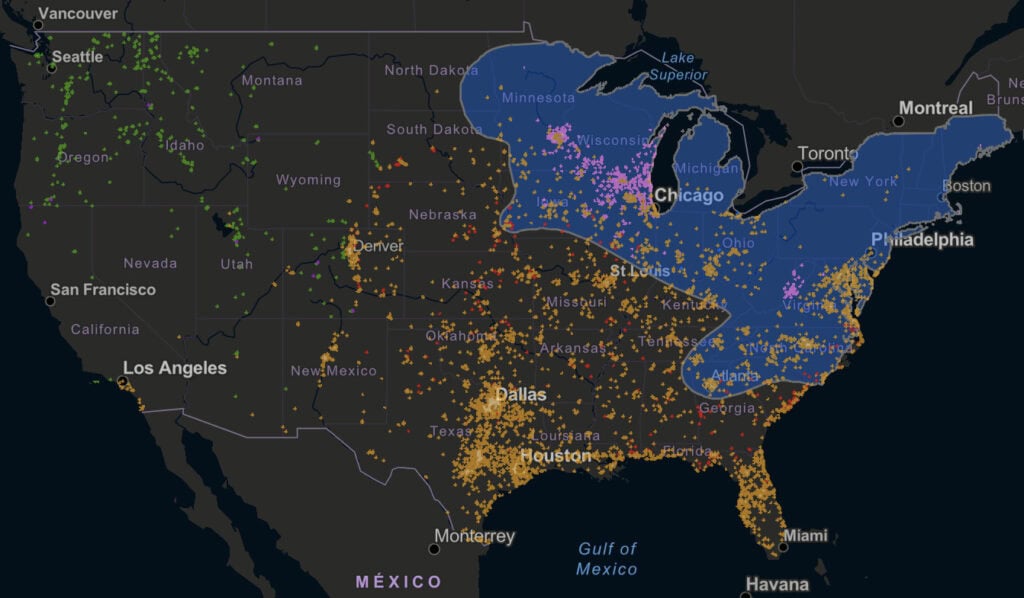
Conserving Bumble Bees Through Voluntary Action
In a world of 8 billion people and growing, conservation is needed more than ever. Across North America, bumble bees are declining because of habitat loss and degradation, climate change, and other threats. Energy and transportation land managers can play a critical role in countering these declines by supporting bumble bee habitat conservation. As demands on the land increases for multiple needs, voluntary conservation agreements are an important mechanism needed to restore compatible areas and provide essential habitat for biodiversity.
Many land managers are interested in conservation but are concerned about potential regulatory risks that could result from habitat improvements. Voluntary conservation agreements address this challenge by encouraging landowners and land managers to engage in conservation by reducing the risk of added restrictions if those species become listed under the Endangered Species Act (ESA).
The University of Illinois Chicago in partnership with the Wisconsin Department of Natural Resources and representatives from the energy and transportation sectors developed a voluntary Conservation Benefit Agreement (CBA) to support habitat for eleven species of at-risk bumble bees. Together, these species represent a wide geographic range across the continental U.S.
Which Bumble Bees are Targeted by this Agreement?
The Bumble Bee CBA targets 11 species of bumble bees native to North America. These species are experiencing severe population declines and have been petitioned, proposed, or already listed under the ESA. Conservation commitments made under the CBA also benefit a wide array of other pollinators.

Not sure which species occur in your area? Check out our interactive occurrence areas map to view ranges for each of the at-risk species targeted by the Bumble Bee CBA. These ranges were developed using occurrence data assembled, maintained, and updated by Leif Richardson of the Xerces Society for Invertebrate Conservation, and as used in his book, Bumble Bees of North America: and Identification Guide (2014) and are used with permission and should not be republished without authorization.
How Did This Effort Begin?
This effort builds on the success of the Monarch Candidate Conservation Agreement with Assurances (Monarch CCAA) in engaging energy and transportation land managers in voluntary conservation and has already generated over 1.2 million acres of habitat. The Bumble Bee Conservation Benefit Agreement (CBA) is designed to complement the Monarch CCAA by building on existing conservation action and allowing agreement-specific commitments where preferred.
Conceptual development of the Bumble Bee CBA began in Fall 2021. Industry partners first convened in 2022 to develop the agreement. After 14 months of collaboration, UIC submitted the Bumble Bee CBA as an Enhancement of Survival permit application to the U.S. Fish and Wildlife Service for review in May 2024. Final approval is anticipated in late 2025, and enrollment can begin as soon as the agreement is approved.
For more information, check out our recent CBA WEBINAR or SLIDES.
Learn More
Interested in Enrolling?
Learn the CBA Partner Commitments and the relation to the Monarch CCAA.
Want to Support the Effort?
See how you can incorporate bumble bee conservation efforts into your daily life.
Frequently Asked Questions
What type of agreement would this be?
The proposed agreement is expected to be a conservation benefit agreement, which is a new agreement type proposed by USFWS. Conservation benefit agreements (CBAs) are proposed under rule updates that affect how USFWS implements Section 10 of the Endangered Species Act. These agreements are intended to replace Candidate Conservation Agreements with Assurances (CCAA) and Safe Harbor Agreements (SHA).
Why is a conservation agreement needed?
In a world of 8 billion people and growing, conservation is needed more than ever. With increased demands on the lands for industry, farming, housing, and other uses, voluntary conservation agreements are an important mechanism needed to “re-wild” areas that are compatible with other uses and support habitat for biodiversity where needed most.
Many private land managers are interested in voluntary conservation, but are also concerned with potential regulatory risks resulting from habitat improvements. Voluntary conservation agreements like this allow landowners and land managers to engage in conservation while avoiding the risks of added regulations in the event that a species is listed.
What do the conservation measures look like?
Conservation measures are being developed in the agreement which address various conservation needs of the targeted at-risk bumble bees. Measures are being developed to address loss of habitat, reduce exposure to pesticides and other threats, and combat habitat degredation.
Thank You to Our Supporters!
































